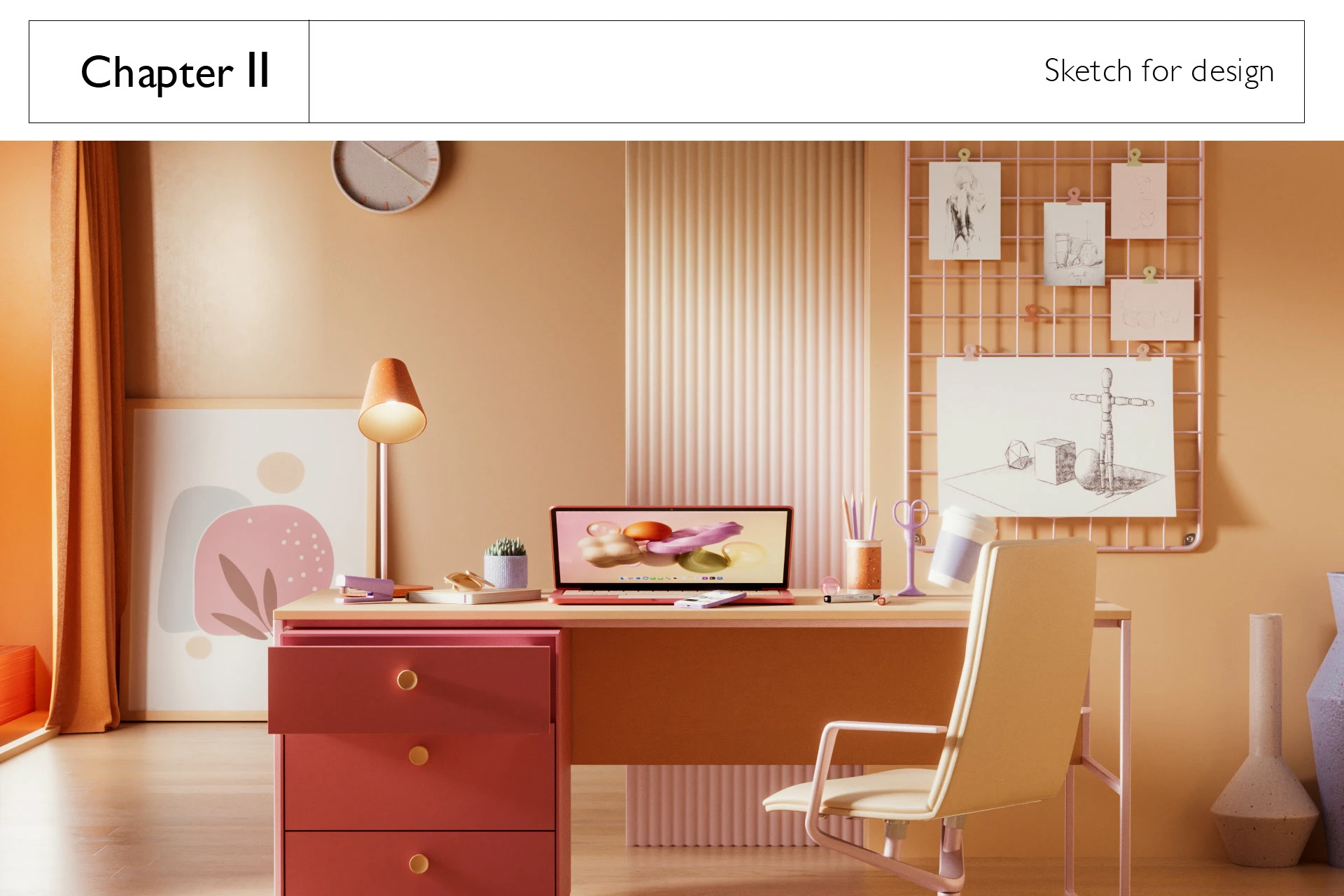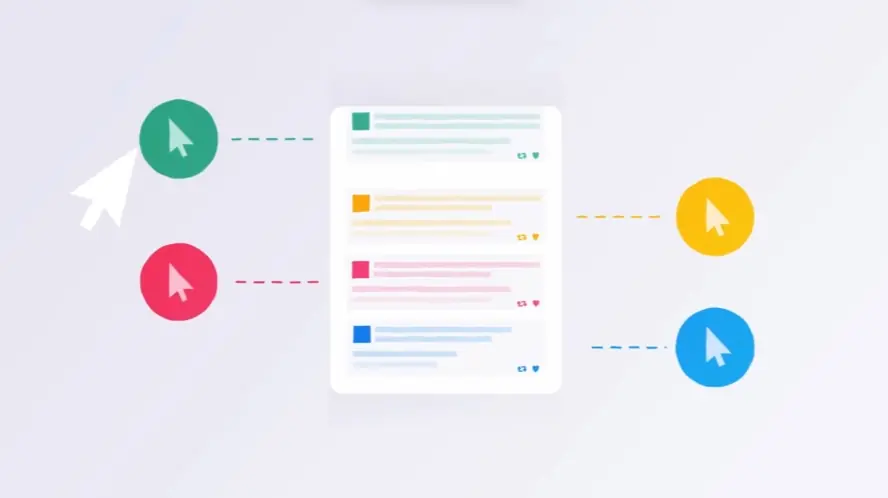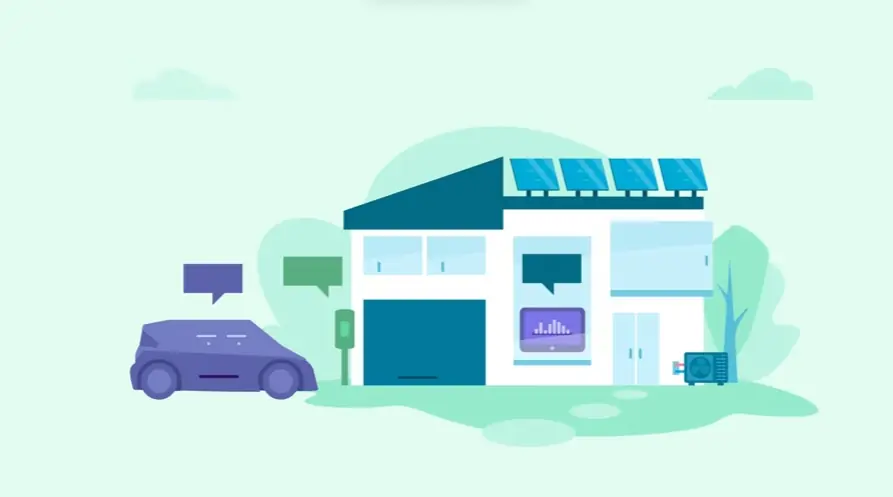
How can a 3D flythrough showcase my product's unique features better than a standard video?
Flythroughs surpass standard video by offering dynamic exploration of features, showcasing functionality, and design intricacies through interactive elements and strategic camera work.
What pre-production steps are crucial for a compelling 3D flythrough experience?
Compelling flythroughs require meticulous pre-production:
Client briefings and needs analysis
Concept and script development
Storyboarding and animation sequence design
Technical planning and asset gathering
How can I ensure my 3D flythrough narrative resonates with my target audience's needs?
Narrative resonance is achieved by deeply understanding the target audience. Conduct thorough research, analyze their needs, and tailor the narrative accordingly.
What camera techniques maximize engagement in a 3D flythrough?
Maximize engagement with varied camera angles, smooth transitions, dynamic tracking, and close-ups on key features, creating an immersive experience.
How can I leverage existing 3D models for a cost-effective flythrough production?
Existing 3D models can be cost-effective. Analyze their suitability, optimize them for the workflow, and explore integration options.
What are the key considerations when planning a 3D flythrough for a manufacturing facility?
Manufacturing facility flythroughs should showcase scale, highlight safety features, demonstrate workflows, and consider interactive elements for enhanced engagement.
How can a virtual tour of my business enhance lead generation?
Virtual tours enhance lead generation by offering immersive experiences that showcase businesses uniquely, driving engagement and interest.
What's the optimal duration for a 3D flythrough to maintain viewer interest?
Optimal flythrough duration varies based on complexity. Concise storytelling maintains viewer interest without overwhelming them. Testing can help determine the ideal length.
How do I seamlessly integrate my brand identity into a 3D flythrough environment?
Seamless brand integration is achieved through consistent color palettes, strategic logo placement, and adherence to brand guidelines throughout the flythrough.
What common pitfalls should I avoid when commissioning a 3D flythrough?
Avoid pitfalls like unclear objectives, insufficient planning, neglecting asset optimization, and overlooking target audience needs. Thorough pre-production is key.
How can I ensure my 3D flythrough is compatible with various viewing platforms?
Ensure compatibility by delivering videos in various resolutions and formats optimized for different devices and platforms.
How can a 3D walkthrough highlight the spatial relationships within a complex design?
Walkthroughs highlight spatial relationships using dynamic camera movements, cutaways, and exploded views to showcase component interactions.
What are innovative ways to use 3D flythroughs for marketing beyond real estate?
Innovative flythrough marketing extends beyond real estate, encompassing product demonstrations, virtual tours, training simulations, and interactive educational experiences.
How can I use a 3D flythrough to educate potential customers about a complex process?
Educate customers about complex processes by breaking them down into digestible steps, using clear visuals, animations, and concise narration.
How can lighting and textures enhance realism and immersion in a 3D flythrough?
Realistic lighting and textures enhance immersion by creating believable environments, adding depth, and highlighting key details. Consider professional lighting and texturing artists.
Mastering Realistic Lighting in 3D Flythroughs
Achieving breathtaking realism, the hallmark of a truly captivating 3D Flythrough Video, fundamentally relies upon the sophisticated application of lighting techniques. This involves not just placing virtual lights but simulating how illumination behaves physically, bouncing off surfaces, casting subtle shadows, and reflecting accurately within the digital environment. Mastering this artistry transforms static scenes into vibrant, believable spaces viewers can genuinely explore.
Global Illumination forms the bedrock, accounting for indirect light interactions that fill spaces with natural soft light. Techniques like Radiosity excel in architectural visualizations, simulating diffused light bounces throughout interiors and exteriors. For capturing intricate light effects, such as the dazzling patterns light makes passing through glass or water (caustics), Photon Mapping offers precise solutions. Ray Tracing further refines visual fidelity by accurately computing complex reflections and nuanced soft shadows, adding crucial depth and grounding elements within the scene.
Integrating High Dynamic Range Images (HDRI) provides environmental realism unparalleled by simple light sources. These images capture actual lighting conditions from real-world locations, serving as powerful environmental lights that illuminate scenes naturally and create authentic reflections on shiny surfaces, further immersing the viewer. Strategic placement of virtual lights, understanding color temperature, and incorporating fill or accent lights precisely sculpt the scene's mood and guide the viewer's eye towards key features, much like a cinematographer lights a film set.
Realistic textures and materials significantly impact how light interacts with surfaces. Using techniques like bump maps or displacement maps adds subtle surface variations, making materials feel tangible, reacting realistically to light and shadow. Layering textures creates visual depth, avoiding flat appearances. Furthermore, configuring material properties like metalness and roughness dictates how surfaces reflect or absorb light, enabling surfaces to appear convincingly metallic, rough, or glossy. Post-production provides a final layer of refinement; Color Correction ensures color accuracy, while Color Grading establishes the desired mood or visual style. Render Passes offer invaluable flexibility, allowing adjustments to elements like lighting or reflections without re-rendering the entire animation. Polishing renders using noise reduction techniques ensures a crisp, professional final output, contributing to a consistent frame rate and overall image clarity. Mastering these elements ensures compelling, visually striking flythroughs.
Why Advids for 3D Flythrough Video?
At Advids, we specialize in crafting captivating 3D flythrough videos that elevate your brand and drive business growth. Our blend of creative storytelling, cutting-edge technology, and extensive experience ensures your vision takes flight in a stunning and effective animation.
Experience the Advids Advantage:
12+ Years of Proven Success: With over 3400 clients served, we possess a deep understanding of what makes a 3D flythrough video truly soar. We've honed our expertise across diverse industries, delivering exceptional results time and time again.
Trusted by Industry Leaders: From startups to Fortune 500 companies, brands like Razorpay, Ola, Mercedes, the United Nations, Continental, and Mercer rely on Advids to bring their architectural visions to life through immersive 3D flythroughs.
Client Satisfaction Guaranteed: Our commitment to excellence is reflected in over 109 five-star Google reviews, showcasing our dedication to client satisfaction and the quality of our 3D flythrough animations.
Transforming Your Vision into Reality:
Customized 3D Flythrough Video Solutions: We tailor each project to your specific needs, whether showcasing a building's interior, exploring a vast landscape, or presenting a complex engineering design. With over 275 successful 3D flythrough video projects completed, we have the experience to bring your vision to life.
Cutting-Edge 3D Flythrough Video Technology: We utilize the latest software and rendering techniques to create photorealistic visuals and seamless transitions, ensuring your 3D flythrough video captivates your audience.
Creative Storytelling Through Animation: Our team of skilled animators and storytellers craft compelling narratives that enhance the visual experience, transforming your 3D flythrough into an engaging and informative journey.
A Partnership Built on Collaboration:
Collaborative Process: We work closely with you throughout the entire process, from initial concept to final delivery, ensuring your feedback is incorporated every step of the way.
Strategic Communication: Open and transparent communication is paramount. We prioritize understanding your objectives, target audience, and brand identity to create a 3D flythrough video that effectively communicates your message.
Ready to unlock the potential of 3D Flythrough Video for your business with the latest video design trends of 2024? Let Advids be your trusted partner in transforming your ideas into engaging and effective animated experiences.
Checkout some of the projects and work our team at Advids has been producing:
What is a 3D Flythrough Video?
A 3D Flythrough video is a captivating form of animation that simulates a real-life tour of a space or object, using cutting-edge 3D modeling and animation techniques. Unlike traditional videos, 3D Flythroughs offer an immersive experience, allowing viewers to perceive depth, scale, and spatial relationships. Whether it's a virtual tour of a luxury apartment, a detailed exploration of a product's design, or a journey through a historical landmark, 3d flythrough videos bring concepts to life with stunning realism.
These videos are incredibly versatile, serving a wide range of purposes across various industries. Architects use them to showcase their designs, real estate agents employ them to offer virtual property tours, and product developers leverage them to demonstrate their creations in intricate detail. 3D Flythroughs bridge the gap between imagination and reality, offering a unique and engaging way to experience the world around us.
What do top 3D Flythrough Videos have in common?
Mastering these elements ensures your 3D flythrough videos are captivating and impactful.
Model Realism - Employ advanced modeling techniques like displacement mapping for intricate details. Prioritize realistic materials and shaders.
- Reference Imagery - Source high-resolution images from reputable sources, ensuring proper licensing. Use HDRI for realistic lighting.
- Camera Work - Incorporate dynamic camera movements, such as smooth pans and tilts, to enhance engagement. Use dolly zooms for dramatic effect.
- Lighting Techniques - Implement global illumination for realistic lighting interactions. Use subtle lighting changes to highlight key features.
- Surface Detail - Use normal maps and other techniques to add subtle surface variations. Layer textures for depth and realism.
- Scene Arrangement - Use the rule of thirds and leading lines to guide the viewer's eye. Create a clear focal point.
- Environmental Fidelity - Include accurate environmental details, such as vegetation and signage. Use real-world data for accurate dimensions.
- Frame Rate Consistency - Render at a consistent frame rate to avoid judder. Optimize your rendering settings for smooth playback.
- Image Clarity - Choose a resolution appropriate for your target platform. Consider using anti-aliasing techniques.
- File Optimization - Use appropriate codecs and compression settings. Test your video on different devices to ensure compatibility.
What makes 3D Flythrough Video effective?
Photorealistic 3D models, mirroring real-world textures and lighting, create an immersive experience. A compelling narrative arc, strategically revealing information and building anticipation, is paramount. Dynamic camera movements, including smooth pans, tilts, and zooms, guide the viewers eye and enhance the sense of exploration. Precise camera choreography reveals spatial relationships and architectural details effectively.
Interactive elements, including hotspots, clickable annotations, and branching narratives, enable personalized exploration and boost engagement. Optimized rendering for multiple resolutions and formats ensures seamless viewing across all devices. Tailoring the visual style and narrative to the target audience is crucial for maximum impact. Integrating data visualization seamlessly enhances communication of complex information.
Comprehensive pre-visualization and detailed storyboarding are essential for a cohesive final product. Meticulous post-production, encompassing color grading and final rendering, ensures a polished result.
How long should your 3D Flythrough Video be?
Optimize 3D flythrough video length for maximum impact by aligning video type, use case, and target audience stage.
Pre-production Considerations for Determining Video Length:
- What's the video's core message?
- Who is the intended viewer?
- How many key features are shown?
- What style best suits the product?
- What platform will host the video?
- What's the desired viewer experience?
- Does the video need a narrative?
3D flythrough video length guide
| 3D Flythrough Types | Video Length | Use Case | Funnel |
|---|
| Architectural Walkthrough | 45-60 seconds | Showcases building design, features, and spatial relationships using smooth camera movements and potentially photorealistic rendering | Awareness/Consideration |
| Real Estate Tour | 30-45 seconds | Highlights key property features, emphasizing spaciousness and desirable aspects with cinematic visuals and potentially a stylized approach | Consideration/Conversion |
| Product Demonstration | 15-30 seconds | Demonstrates product functionality and benefits within a simulated environment, using clear visuals and concise animations | Consideration/Conversion |
| Landscape Flythrough | 45-75 seconds | Captures the beauty and scale of a landscape, using dynamic camera angles and potentially artistic rendering styles | Awareness/Interest |
| Cityscape Exploration | 60-90 seconds | Provides a virtual tour of a city, showcasing landmarks and atmosphere, using a blend of realistic and stylized elements | Awareness/Interest |
How to create 3D Flythrough Videos?
Mastering 3D flythrough video production requires a strategic approach, focusing on pre-visualization and meticulous execution to deliver impactful results.,,
* Project scoping - A well-defined scope prevents scope creep and ensures the project stays on track and within budget.- Storyboard creation - A detailed storyboard minimizes revisions during production, saving time and resources.
- 3D model creation - High-fidelity models create a more immersive and believable experience, increasing viewer engagement.
- Camera path design - Dynamic camera movements create visual interest and guide the viewer's attention to key features.
- Material selection - Realistic materials enhance the visual appeal and realism, creating a more impactful viewing experience.
- Lighting design - Strategic lighting enhances the mood and highlights architectural details, creating a more engaging and memorable video.
- Model rendering - High-resolution rendering ensures a crisp, professional look, improving the overall quality and impact.
- Animation integration - Smooth animations add realism and visual interest, making the flythrough more engaging and memorable.
- Video editing - Precise editing ensures a seamless and professional final product, enhancing the overall viewing experience.
- Platform optimization - Optimized videos ensure consistent quality across devices, maximizing reach and impact.
- Quality assurance - Rigorous testing minimizes errors and ensures a polished final product, enhancing credibility and professionalism.
The benefits of 3D flythrough videos for business
Stepping beyond technicalities, let's explore how 3D flythrough videos revolutionize business communication. We're not just creating pretty pictures; we're building immersive experiences that resonate with audiences, drive conversions, and elevate your brand. Imagine showcasing a complex architectural design with clarity and impact, or demonstrating software functionality with engaging visuals. That's the power of 3D flythroughs.
Think about the possibilities: captivating potential investors with a virtual tour of a planned facility, or training employees on complex procedures through interactive 3D simulations. These videos aren't just marketing tools; they're powerful instruments for communication, collaboration, and innovation.
- Boost engagement and leave a lasting impression with captivating visuals that surpass traditional media. Showcase intricate product details and functionality with compelling 3D product flythrough video examples, creating a memorable customer experience.
- Streamline communication and decision-making among stakeholders, minimizing misunderstandings and costly rework. Offer accessible experiences to a global audience with immersive 3D virtual tours, breaking down geographical barriers.
- Elevate your brand perception by showcasing innovation and professionalism. Impress potential buyers or investors with realistic 3D facility tours, highlighting key features and spatial relationships.
- drive sales by empowering customers to visualize products or spaces before purchasing. Train employees or showcase software features effectively with engaging 3D flythrough video examples for software, enhancing understanding and retention.
In essence, 3D flythrough videos empower businesses to communicate more effectively, engage audiences more deeply, and ultimately achieve greater success.
3D flythrough video production process explained
Creating compelling 3D flythrough videos involves a multi-stage process, blending technical expertise with creative vision. From initial planning to final delivery, each step plays a crucial role in bringing your vision to life. Ever wondered how those stunning 3D architectural flythrough video examples are made? Let's explore the key stages.
We begin with meticulous planning, defining project scope and objectives. Storyboarding is essential, visualizing the narrative and planning camera movements. Think of it as crafting the blueprint for your video. Next, we dive into the 3D world. Creating detailed and accurate 3D models is paramount, especially for architectural visualizations. realistic textures and materials enhance visual appeal, making the experience more immersive. Reviewing a 3D flythrough video portfolio can offer valuable inspiration.
Next, we breathe life into the scene. Dynamic camera work keeps viewers engaged, guiding their attention through the virtual space. Strategic lighting sets the mood and highlights key features. 3D product animations showcase functionality and features in dynamic ways. Rendering generates high-resolution images, capturing every detail.
Finally, we refine and polish. Video editing brings everything together, adding music, sound effects, and visual effects. The goal is to create truly 3d immersive videos that transport viewers into the scene. Optimization ensures smooth playback across various platforms. Quality assurance is the final check, ensuring a polished and error-free product.
Through careful planning and execution, we transform concepts into captivating 3D flythrough experiences.
3D flythrough videos for medical device marketing
Let's delve into the transformative potential of 3D flythrough videos in medical device marketing. Imagine showcasing a new heart valve's intricate mechanics with stunning visual clarity, or guiding surgeons through a complex procedure within a virtual operating room. That's the power of 3D flythroughs. We're not just creating pretty pictures; we're building immersive experiences that resonate with audiences, drive conversions, and elevate your brand.
Think about the possibilities. Interactive 3d walkthrough videos can train medical professionals on new devices, while engaging patient education materials empower informed decisions. Drawing inspiration from 3D architectural animations, we can create stunning visuals of a device's internal mechanisms, showcasing its precision and innovation. Similar to 3D flythrough video examples for manufacturing, medical device videos can demonstrate the meticulous production process, building trust and credibility.
- Showcase complex device functionality with unprecedented detail, surpassing traditional media's limitations.
- Offer interactive training modules for medical professionals, enhancing their understanding and proficiency.
- Create compelling marketing materials that captivate audiences and drive sales.
- Reduce the need for costly physical prototypes, streamlining development and saving resources. For instance, 3D flythrough animation examples can showcase a new catheter's navigation through the circulatory system, eliminating the need for a physical model.
In essence, 3D flythrough videos empower medical device companies to communicate more effectively, engage audiences more deeply, and ultimately achieve greater success. They're not just marketing tools; they're powerful instruments for innovation, education, and connection.
Author & Editor Bio
A video producer with a passion for creating compelling video narratives, Jai Ghosh brings a wealth of experience to his role. His background in Digital Journalism and over 11 years of freelance media consulting inform his approach to video production. For the past 7 years, he has been a vital part of the Advids team, honing his expertise in video content planning, creation, and strategy.
His collaborative approach ensures that he works closely with clients, from startups to enterprises, to understand their communication goals and deliver impactful video solutions. He thrives on transforming ideas into engaging videos, whether it's a product demo, an educational explainer, or a brand story.
An avid reader of modern marketing literature, he keeps his knowledge current. Among his favorite reads from 2024 are "Balls Out Marketing" by Peter Roesler, "Give to Grow" by Mo Bunnell and "For the Culture" by Marcus Collins. His results-driven approach ensures that video content resonates with audiences and helps businesses flourish.




